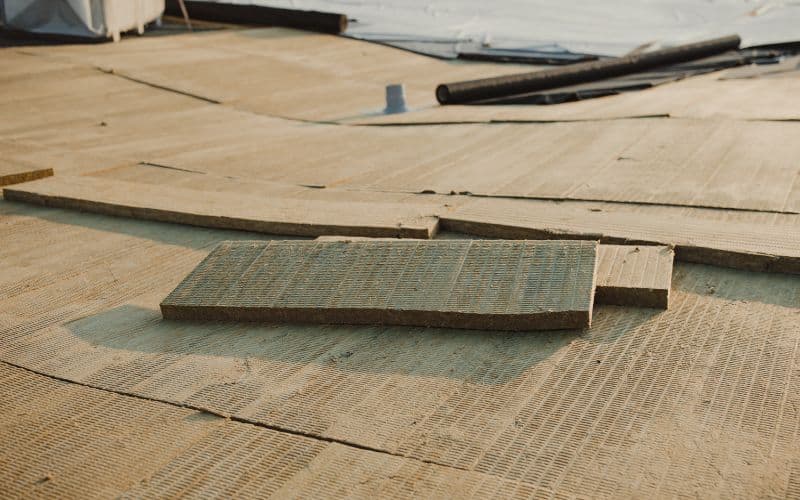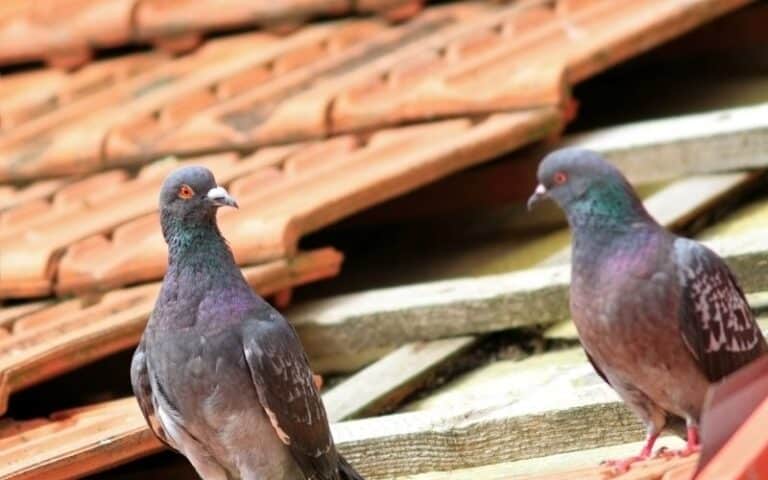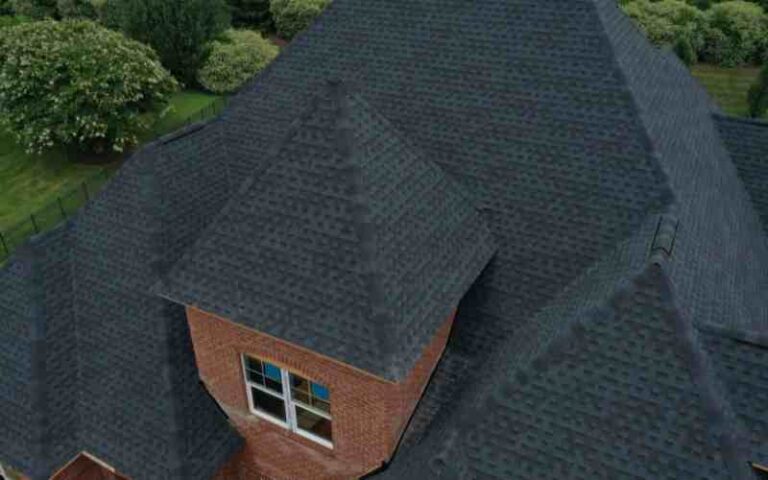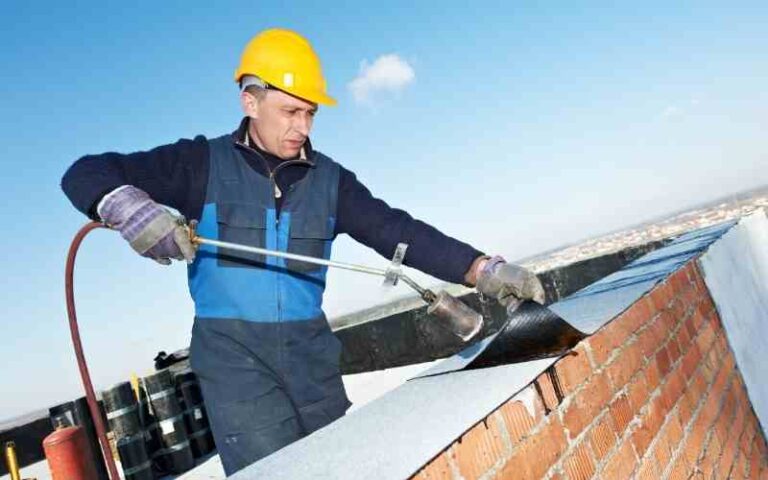Wrinkles from TPO roofs are not physically appealing. Not only do wrinkles look bad, but they also indicate underlying issues.
Many users of TPO roofs wonder if it’s normal or due to the membrane not adhering correctly.
Cold weather usually causes wrinkles on TPO roofs. The wrinkles often disappear when the weather warms up. If it doesn’t, it could result from undue stress and poor dimensional stability of insulation boards.
Ready for a Roofing Quiz?
Should a TPO Roof have Wrinkles?

A TPO roof shouldn’t have any wrinkles or bubbles. Wrinkles result from full adhesion; this happens when you don’t allow the bonding adhesive to flash off.
Wrinkles make the TPO roofs look unappealing. Everyone wants their finished exterior to look fabulous; wrinkles would spoil the satisfaction you get from a beautiful finish.
Little wrinkles upon installation are normal. They should work themselves out when the weather gets hotter.
Wrinkles that don’t go away might turn into cracks, and this would make your roof leak.
Wrinkles are a defect that indicates the finished work wasn’t done right. If they don’t straighten up when the weather gets hotter, then there is an underlying cause due to the installer’s fault.
It can also be caused by the type of TPO material used. Not all manufacturers follow the best quality standards. As you read, you’d read about the best brand to buy TPO from.
Wrinkles could also indicate underlying causes like stress or structural movement. But most often, they appear due to contractions or expansions.
Wrinkles often crack and let moisture into the insulation of your house. Moisture in your insulation could lead to fungal growth and the introduction of pests into your house, which isn’t a good thing that everyone can agree on.
Why Wrinkles in TPO Roof?
Like every other material, TPOs have a thermal expansivity coefficient which means they can expand and contract due to heat or cold.
When dimensional stability is poor, the TPO’s insulation boards will shrink, leaving gaps that would create wrinkles in the waterproof membrane of the TPO.
When TPOs are installed in cold weather conditions, they would likely leave little wrinkles or bubbles, which are normal. What is not normal is when the wrinkles are prominent.
If the wrinkles were caused by the cold, the TPO would expand when you use a heat gun or any other heat source.
You can also wait till when the weather gets hotter. The expansion would cause the crease to disappear.
Prominent wrinkles or bubbles mean the installer didn’t weld some of the edges well, which allowed air or moisture to get underneath. Looking at them alone would give you worries.
If you are wondering how you would fix the wrinkles on your TPO roof, read this article’s subheading, as it gives you ways to remedy the situation.
How to Fix Wrinkles in the TPO Roof?
The wrinkles typically disappear when the weather warms up. You could also use a heat source to follow the wrinkles; heating them would cause them to expand.
Heat guns are good heaters for fixing TPO roof membrane wrinkles. They usually work if the wrinkles are due to contractions from the cold weather. If the heat gun doesn’t work, you must try another way.
It is very little you can do to fix wrinkles on your flat roof. You can cut off and replace the areas with wrinkles. Make sure you replace them with the same number of layers you cut off.
Alternatively, you could cut “Xs” into the areas with wrinkles, peel the bad parts, and replace them with new good ones. Always replace them with the same number of layers you peeled off.
The last way to ‘fix’ wrinkles is to have the whole thing re-installed. It’ll cost you money. But get another person to redo the job. This time, hire someone good at the job.
Common Reasons why Wrinkles Formed in TPO Roof?
When using flat roofs like TPO, you risk the possibility of moisture and air getting trapped underneath the rubber membrane lining.
Below are some causes of wrinkles in TPO roofs.
| Causes of Wrinkles | Explanation |
|---|---|
| Trapped air and moisture | Air would form blisters, bubbles, and wrinkles. The air or moisture is usually trapped in the roofing layer, membrane, and roof deck. These wrinkles would eventually crack if not fixed, letting in moisture and causing more problems. |
| Contractions due to cold | TPO, like any other material, goes through expansion and contraction. If the TPO roof was installed during cold weather, the possibility of it wrinkling becomes relatively high. If this is the case, when the weather gets hotter, it’ll straighten up. |
| Wrong installation | If the TPO roof wasn’t installed correctly, there would be gaps in the cut edges. This happens if the cut-edge sealant doesn’t bind the TPO to the building. This would leave gaps that could allow moisture and air inside, which would, in turn, create wrinkles. If not attended to on time, fungi could grow there, introducing pests to the house. |
Avoiding all these would give your installed TPO the aesthetic appeal you want and would also save you money from fixing the wrinkles.
What is the Best TPO Material to Prevent Wrinkles in Roofs?
TPO, which stands for thermoplastic Polyolefin, is a single layer of rubber roofing material that makes it easy to install.
Since it isn’t installed in multiple layers, it reduces errors that’ll cause roof leakage. TPO is 100% recyclable.
One major problem of TPOs is wrinkles which form due to various reasons. We all don’t want our roofs looking ugly or leaking.
You should ensure you buy your TPO roofs from the best manufacturer to avoid this.
GAF, North America’s largest roofing material company, has proven to be the best manufacturer of TPOs. Its EverGuard Extreme® TPO is the best-performing TPO in the market currently.
To ascertain their claims, GAF commissioned structural research inc (SRI), a popular and highly regarded laboratory that did testing with NRCA, UL, and MRCA.
They carried out the most considerable independent performance test study on these TPO brands to be ever carried out. It seems they were ready to show everyone how great their product was.
They carried out this testing by getting their hands on different rolls of GAF, Carlisle, Firestone, and JohnManville TPO.
Through 2013 and early 2015, these rolls were made by the manufacturers’ plants listed above.
After cutting over 400 samples from the various roles, the samples went through 6,000 individual measurements throughout the time the study was being carried out.
That is a lot of samples, and taking those measurements took quite a lot of time. The membrane samples were subjected to various tests.
Like thickness above scrim and weld strength. The thicker the TPO, the more resistant it is to contractions and expansions. All the samples, however, showed similar performances on this test.
When it was time for heat aging, weight loss, and weathering test, SRI noticed a vast difference in GAF TPO over the others. This test is associated with long-term performance.
The test concluded that GAF TPO was the best by a wide margin. Not only is the weld strength better(weld strength helps prevent wrinkles), GAF TPO would last longer and would be less likely to crack where bubbles form.
Conclusion
TPO roofs are the most recent innovation in flat surface roofing. However, their aesthetic appeal could be ruined by wrinkles.
Nevertheless, adhering to a few procedures can easily fix and avoid wrinkles.






